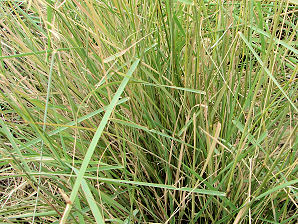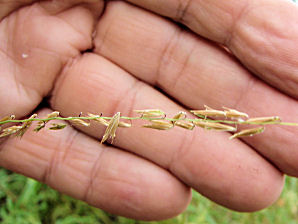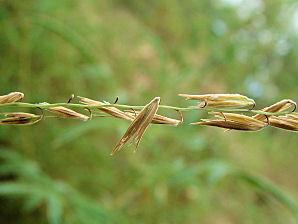Xeriscape Landscape Plants & Flowers
For The Arizona Desert Environment.
Pictures, Photos, Images, Descriptions, & Reviews.
Sideoats Grama, Bouteloua curtipendula.
We Are Proud Of Our SafeSurf Rating!
Click On Any Of The Following Links By Amazon.Com
For Books, & Videos About Wildflowers Of Arizona & The Southwest USA. No Obligation!
| Sideoats Grama, Bouteloua curtipendula. Photo September 29, 2006. Arizona - Sonora Desert Museum. Near Tucson, Arizona. |
|---|
 |  |
| Sideoats Grama. Bouteloua curtipendula. | Sideoats Grama. Bouteloua curtipendula. |
|---|---|
 |  |
| Sideoats Grama. Bouteloua curtipendula. | Sideoats Grama. Bouteloua curtipendula. |
Sideoats Grama. Bouteloua curtipendula, Grass Family ( Poaceae ) or ( Gramineae ), Sideoats Grama. Also called: Bouteloua curtipendula var. curtipendula. We wish to thank Wikipedia, the free encyclopedia for some of the information on this page. We share images and information with Wikipedia. Bouteloua curtipendula, sideoats grama, is a medium-size perennial bunchgrass, 15 to 30 inches tall or occasionally taller. This is the largest and most coarse of the grama grasses. It has a bluish-green color, sometimes with a purplish cast (especially in the spring), and cures to a reddish-brown or straw color. Its leaves are coarser than most other species of gramas, straight, comparatively stiff, and mostly basal. Its ten to thirty small, non-comb-like spikes are borne mostly along one side of each central seed stalk. These spikes drop when mature, leaving a long zigzaged stalk. Sideoats grama is especially noted for its distinctive arrangement of oat - like seed spikes which hang from only one side of its flowering stems. It typically occurs in glades, upland prairies, open rocky woodlands, and forest openings up to an elevation of about 7,000 feet in the U.S. and adjacent Canada and Mexico. Narrow, bluish-gray leaf blades (to 1/4" wide) typically form a dense clump growing 1 - 1 1/2 foot tall. Its foliage turns golden - brown in the autumn, sometimes developing hues of orange and red. Inflorescences of purplish-tinged flowers appear on arching stems above the foliage in early to mid summer, typically bringing the total height of the clump to 3' tall. Inflorescences fade to tan as the seeds mature. It is easily grown in average, dry to medium wet soils in the full sun. It tolerates a wide range of soil conditions from well-drained sandy soils to heavy clays. It can be grown from seed and may self-seed in the garden under optimum growing conditions. You should cut the clumps to the ground in the late winter. Sideoats grama is distributed throughout most of the United States. Perhaps, not in Nevada.
Quick Notes:
Height: Height normally about 15 to 30 inches tall or occasionally taller.
Flowers: Inflorescences of purplish - tinged flowers.
Flowering Time: Phoenix Arizona. Late September - November.
Leaves: Simple, bluish-gray leaf blades (to 1/4" wide), straight, comparatively stiff, and mostly basal.
Found: The USDA claims it is native to the USA (AL, AR, AZ, CA, CO, CT, DC, FL, GA, HI, IA, ID, IL, IN, KS, KY, LA, MD, ME, MI, MN, MO, MS, MT, ND, NE, NJ, NM, NY, OH, OK, OR, PA, SC, SD, TN, TX, UT, VA, WA, WI, WV, WY), NOT Nevada! Also native to Canada (AB, BC, MB, ON, SK). Also found in northern Mexico in the states of Baja Norte, Baja California, Chihuahua, Coahuila, Durango, Nuevo Leon, Sonora, Tamaulipas, & Zacatecas.
Hardiness:
Soil pH requirements:
Sun Exposure:
Elevation: Naturally found at about 0 feet up to 7,000 feet.
Habitat: Occurs naturally in limestone glades, upland prairies, and savannas. Tolerates wide range of soil conditions from well-drained sandy soils to heavy clays. A Xeriscape Landscape plant.
Miscellaneous: Photos Taken At Arizona - Sonora Desert Museum September 29, 2006.
|
We Are Proud Of Our SafeSurf Rating!
Click On Any Of The Following Links By Amazon.Com
For Books, & Videos About Wildflowers Of Arizona & The Southwest USA. No Obligation!
| © 1966 - Present, Audrey, Eve, & George DeLange |
